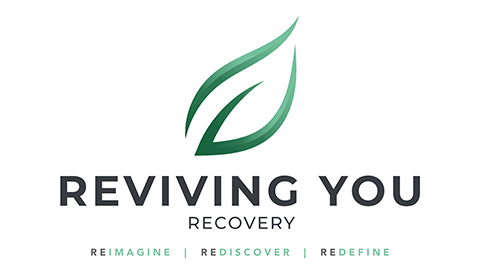What is Trauma-Informed Treatment?

For millions of Americans, trauma is a defining element of personality and mental health. Today, some 70% of adults or over 223 million people have experienced trauma of some kind, and we now know that goes on to be a risk factor in behavioral health, substance use disorders, and even increases the risk of physical health disorders. People who have experienced trauma, especially during key developmental periods such as before the age of 16, are significantly more at risk for physical and mental health disorders. Understanding that trauma and taking it into account during intake, treatment, and aftercare is increasingly seen as a critical part of receiving treatment at all.
For individuals with substance use disorders or mental health disorders, trauma informed care means that people step back from the problem at hand to look at underlying causes and what’s causing you to function in the way that you do. It means getting understanding, respect, and a treatment program that focuses on not just the effects of mental health and substance use disorders, but also the impacts of past trauma. It shifts treatment away from “Fix the symptoms” to “find out what happened and treat that”. That can make a huge difference for many of us, though you often need a mix of both.
What is Trauma Informed Treatment?
Trauma-informed treatment is an approach to care and mental health or substance use disorder treatment that focuses on approaching patients with the understanding that there’s more going on than the symptoms. This means that the first step of trauma-informed treatment is always going to be training staff to approach patients in the right way. If you treat patients as complex people with their own unique reasons for being the way they are, you can then begin to create treatment programs that cater to those unique people.
Here, your mental health history is always taken into account. That means understanding current symptoms and then accepting that they may be a side-effect of trauma. Often this translates into a triage approach, where you receive treatment for pressing issues first. For example, suicidal ideation, substance abuse, significant anxiety, and symptoms that get in the way of receiving or responding to treatment. From there, the baseline should switch to using a framework that treats the underlying trauma as well as its side-effects. For example, the domestic violence framework, which is the most common, uses emotional safety, supporting, and building a sense of personal autonomy as a key part of treatment. Why? It restores the person’s ability to live in a healthy way, meaning they no longer need unhealthy coping mechanisms like drugs or alcohol – which is far more effective in treating substance use disorders over the long term.
Get Your Questions Answered Now
What’s Involved in Trauma-Informed Treatment?
Trauma-informed treatment takes a multi-pronged approach to treat major symptoms and side-effects and then look for underlying causes. That normally means trauma-informed treatment is delivered in layers that look something like this:
- Assessing Mental and Physical Health – Trauma-informed care works mental health assessment into the treatment plan, meaning that your mental health, history of mental health problems, and history of trauma are brought into the treatment as early as possible.
- Treating Pressing/Concerning Symptoms – Triage is performed to determine which symptoms need to be treated first based on which ones are potentially harming the individual or making things worse. E.g., pressing substance use disorders, suicidal ideation, anxiety or worry that interfere with living, etc., and then moving on to looking for and treating underlying causes. This typically involves a mix of behavioral therapy such as CBT and counseling.

- Treating Underlying Concerns – Once you’re out of the danger zone of the initial treatment, your treatment can shift to take underlying causes into account. That normally means assessing what is wrong, implementing a framework, and using tactics like motivational therapy to keep you engaged with treatment. Normally this means starting by working towards creating a safe environment where treatment can happen, which means building trust and empowering individuals to share.
- Building life skills around stress management, anger management, emotional regulation, and healthy habits. These all work together to ensure you have coping skills and life skills to improve your daily quality of life. That typically involves using coaching and behavioral therapy to let individuals solve their own problems and build themselves up to restore personal agency, control, and sense of capability.
- Following Up – Trauma-informed treatment almost always includes the next steps of long-term treatment, aftercare, safety plans, and goal setting, so there’s always structure and a plan to your recovery.
Trauma-informed treatment always starts out with the approach of understanding that everyone is the way they are for a reason. From there, it approaches the individual from a holistic perspective, looking at everything that has gone wrong and looking into how to make improvements. A trauma-informed treatment program should also work to provide a safe environment where patients can feel safe and able to share and grow. In addition, you should have the option to build relationships with caregivers at your own pace – without being rushed into making big steps before feeling safe in them.
How that’s delivered can vary a lot depending on where you’re getting treatment. For example, in a 90-day rehab, you’ll have all the time in the world to build connections with caregivers and to grow into recovery. In an ER setting, that’s less of an option. However, in every setting, trauma-informed treatment should involve looking at what’s going on underneath the symptoms and recommending next steps for treatment so you can take those important steps into recovery and getting your life back.

Benefits of Trauma-Informed Treatment
Trauma-informed treatment is designed around the idea that people are the way they are for a reason. By taking those reasons into account and looking at root causes of issues, trauma-informed treatment can work to fix the underlying causes. That means it works towards improving quality of life as a whole rather than treating the symptoms that come up.
That translates into:
- Identifying past history of trauma and mental health problems and acting on that information
- Building safe environments tailored to the individual
- Ensuring patients feel understood and talked to
- Understanding behavior as a response to trauma and mental health
- Creating opportunities for patients to learn about themselves
- Building skills to improve quality of life
Trauma-informed treatment essentially stops treating mental health and substance use disorder problems like a broken arm. If you go in and treat the symptoms, you’ll recover fully from the problem. Instead, mental health problems are more like treating mold in your bathroom. If you don’t fix the cause, the issues will just keep coming back and may never fully go away. Trauma-informed therapy works to make space for identifying and treating underlying causes, creating understanding that symptoms are just symptoms, and working to ensure that patients have the resources they need to make those steps.
Eventually, trauma-informed treatment is increasingly popular in treating physical and mental health problems. If treatment can take the whole person into account, it can provide that much more opportunity for the individual to feel safe and to have room to recover. In mental health and substance abuse recovery, it means having space to treat not just the symptoms but also the problems that got you where you are today, meaning you are that much more likely to recover and move on to a happy and healthy life.
We Accept Most Insurances
We are in network with:









We know insurance coverage can be a source of uncertainty for people. We make sure you have all the information necessary. The great news is health insurance can potentially cover the total treatment costs. If you don't have insurance, we offer cash payment options for our treatment programs and are committed to working with clients regardless of financial situations.
